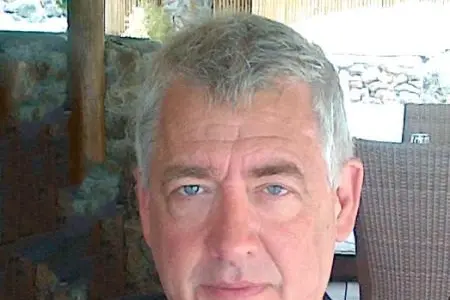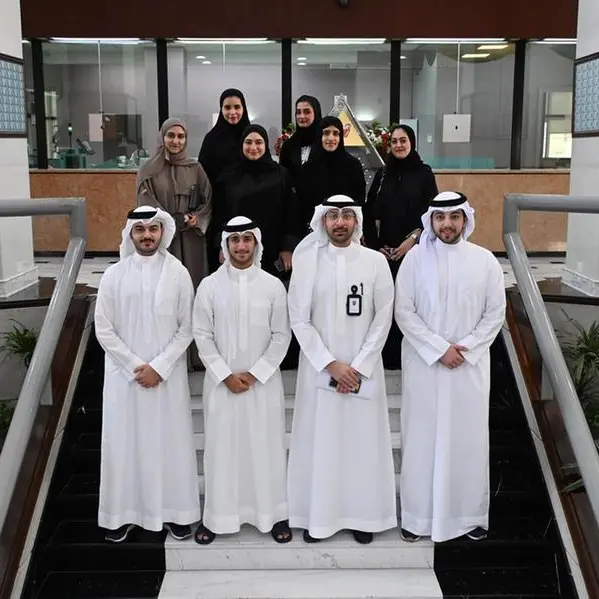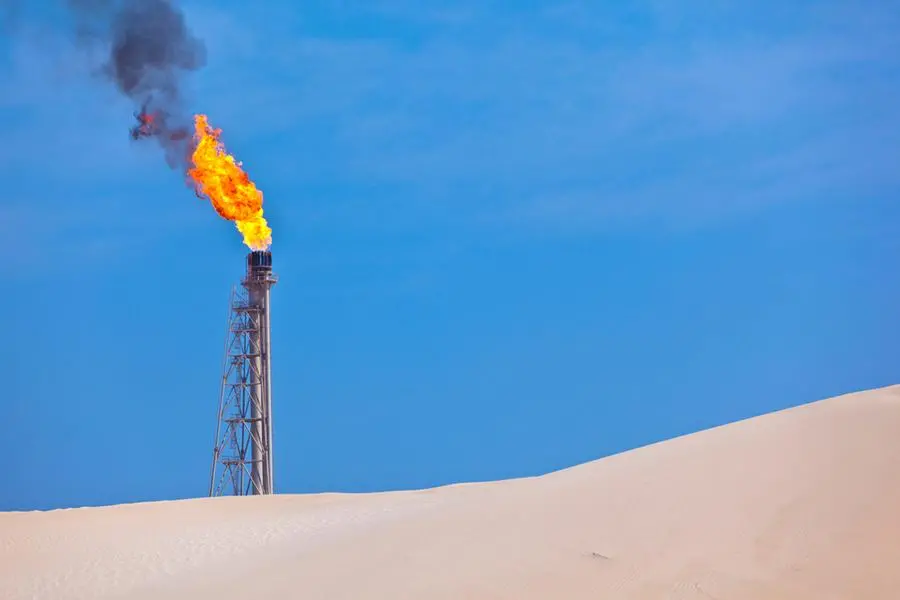PHOTO
· 44th in Chemistry globally rising four ranks higher with 18% growth in adjusted Share**
· Included also – top academic institutions in the index contributing to Arab World research
Cairo: In the Nature Index 2021 Annual Tables, as measured by the metric, Share*, Egypt maintains its positions at 1st in North Africa1, 2nd in Africa, 3rd in the Arab World2 and 7th in MEA1 countries on this year index. Despite the pandemic, the country continues its steady increase in overall share for the fourth year in row.
This year’s Nature Index Annual Tables include seventeen Arab countries, with the top three positions still held by Saudi Arabia, UAE and Egypt respectively since 2017. In Africa, Egypt is in second place after South Africa, while it has remained the first among the North African countries, and almost doubled its research lead over next placed Kenya in 2020.
By specialty, Egypt has been among the top 50 global countries in Chemistry since the launch of Nature Index Tables in 2016. This year it has moved up four positions to 44th with a 17.5% increase in its adjusted Share** resulting in its highest place ever and the smallest gap with its African predecessor South Africa. Egypt has surpassed UAE to become second in this subject in the Arab countries after Saudi Arabia, and fifth in the MENA region.
By academic institutions in Egypt, the British University in Egypt (BUE) moved up four levels to top the performers after pushing Ain Shams University to second place for the first time since 2017. Cairo University (CU) remains third despite the decline in its adjusted Share growth. The American University in Cairo (AUC) and Benha University joined the top 10 list this year by jumping nine and six levels up to occupy the fourth and fifth places respectively after achieving a great growth in their article share. In the same list are also Sohag University in sixth place and Damietta University in ninth place after moving up seventeen and twelve levels respectively. Mansoura University is seventh this year, followed by Tanta University that moved up to eighth place. The German University in Cairo (GUC), returns to this year’s index Egypt tables and occupies the 10th place academically.
David Swinbanks, Founder of the Nature Index, said: “The rise of the British University in Egypt (BUE), with a three-fold increase in adjusted Share between 2016 and 2020, is notable especially its move to number one, displacing Ain Shams University. By analysing all-sector share, this year, Sohag University, the American University in Cairo (AUC) and Benha University show a significant rise jumping twenty-one, eleven and six places up respectively albeit based on a small article count for all three. It is good to see Cairo University and Zewail City of Science and Technology maintaining their third and fifth place respectively, and the National Research Centre (NRC) and Tanta University moving up in places. But output of all these institutions is small and volatile and only time will tell if they represent long term trends.”
On the Nature Index 2021 Annual Tables, the top 10 Arab countries in order of research share are Saudi Arabia, United Arab Emirates, Egypt, Qatar, Oman, Morocco, Lebanon, Tunisia, Algeria and Kuwait.
The top fifteen academic institutions in the Arab countries, in order of research share, are: King Abdullah University of Science and Technology (KAUST) – Saudi Arabia, Khalifa University of Science and Technology – UAE, King Abdulaziz University (KAU) – Saudi Arabia, King Saud University (KSU) – Saudi Arabia, American University of Beirut (AUB) – Lebanon, University of Nizwa – Oman, Hamad Bin Khalifa University (HBKU) – Qatar, King Fahd University of Petroleum and Minerals (KFUPM) – Saudi Arabia, British University in Egypt (BUE) – Egypt, United Arab Emirates University (UAEU) – UAE, Ain Shams University – Egypt, Cairo University (CU) – Egypt, American University in Cairo (AUC) – Egypt, University of Carthage (UCAR) – Tunisia and Sultan Qaboos University (SQU) – Oman.
The top ten African countries in order of research share are South Africa, Egypt, Kenya, Morocco, Tunisia, Uganda, Ethiopia, Algeria, Cameroon and Rwanda. Morocco maintained its fourth place while Tunisia moved up five positions to fifth and Algeria from seventeenth to eighth place.
At a global level, the institutions that have retained their positions at the top of the tables include the Chinese Academy of Sciences, Harvard University, the Max Planck Society, the French National Centre for Scientific Research, and the Stanford University.
David Swinbanks noted: “While the annual tables are a good indicator of high quality research output in the natural sciences, we encourage readers to use the findings alongside other measures such as metrics that encompass research fields beyond the natural sciences as well as other scientific outputs such as data, software and intellectual property when considering research quality and institutional performance.”
*Nature Index’s signature metric, Share, is a fractional count for an article allocated to an institution, city or country/region that takes into account the proportion of authors on the article whose institutional affiliation is with that institution or location.
**Adjusted Share takes account of a small annual variation in the total number of articles in the Nature Index. For further explanation, please see natureindex.com/glossary.
1 MEA and MENA refer to the Middle East Africa and Middle East North Africa regions respectively. North Africa countries on Nature Index 2021 Annual Tables are Algeria, Egypt, Libya, Morocco, Sudan and Tunisia.
2 Arab countries on Nature Index 2021 Annual Tables are Algeria, Bahrain, Egypt, Iraq, Jordan, Kuwait, Lebanon, Libya, Morocco, Oman, Palestinian territories, Qatar, Saudi Arabia, Sudan, Tunisia, United Arab Emirates, and Yemen.
Note: The Nature Index is one indicator of institutional research performance. The metrics of Count and Share used to order Nature Index listings are based on an institution’s or country/region’s publication output in 82 natural science journals, selected on reputation by an independent panel of leading scientists in their fields. The Nature Index recognises that many other factors must be taken into account when considering research quality and institutional performance; Nature Index metrics alone should not be used to assess institutions or individuals. Nature Index data and methods are transparent and available under a creative commons license at natureindex.com.
- Ends-
To access the tables please visit https://www.natureindex.com/annual-tables/2021.
Contacts
Diala Ballout | Springer Nature Group | Corporate Communications | diala.ballout@springernature.com
Katie Baker | Springer Nature | External Communications | katie.baker@springernature.com
About the Nature Index
The Nature Index is a database of author affiliations and institutional relationships. The index tracks contributions to research articles published in 82 high-quality natural-science journals, chosen by an independent group of researchers.
The Nature Index provides absolute and fractional counts of article publication at the institutional and national level and, as such, is an indicator of global high-quality research output and collaboration. Data in the Nature Index are updated regularly, with the most recent 12 months made available under a Creative Commons licence at natureindex.com. The database is compiled by Nature Research, part of Springer Nature.
Nature Index metrics - The Nature Index uses Count and Share to track research output. A country/region or an institution is given a Count of 1 for each article that has at least one author from that country/region or institution. This is the case regardless of the number of authors an article has, and it means that the same article can contribute to the Count of multiple countries/regions or institutions.
To glean a country’s, a region’s or an institution’s contribution to an article, and to ensure they are not counted more than once, the Nature Index uses Share, a fractional count that takes into account the share of authorship on each article. The total Share available per article is 1, which is shared among all authors under the assumption that each contributed equally. For instance, an article with 10 authors means that each author receives a Share of 0.1. For authors who are affiliated with more than one institution, the author’s Share is then split equally between each institution. The total Share for an institution is calculated by summing the Share for individual affiliated authors. The process is similar for countries/regions, although complicated by the fact that some institutions have overseas labs that will be counted towards host country/region totals.
About Nature Portfolio
Nature Portfolio is a range of high-quality products and services across the life, physical, chemical and applied sciences – including journals, databases and researcher services – dedicated to serving the scientific community.
Nature (founded in 1869) is the leading, international weekly journal of science. Nature Portfolio also publishes a range of Nature-branded subscription journals, the leading open access multidisciplinary journal Nature Communications, other open access journals including Scientific Reports, and a range of Nature Partner Journals published in partnership with institutions and societies. Together, these journals publish some of the world's most significant scientific discoveries.
Online, nature.com provides over nine million unique visitors per month with Nature Research content, including news and comment from Nature, and the leading scientific jobs board, Nature Careers. Nature Portfolio also offers a range of researcher services, including online and in-person training and expert language and editing services. For more information, please visit nature.com and follow @nresearchnews. Nature Portfolio is part of Springer Nature.
About Springer Nature
For over 175 years, Springer Nature has been advancing discovery by providing the best possible service to the whole research community. We help researchers uncover new ideas, make sure all the research we publish is significant, robust and stands up to objective scrutiny, that it reaches all relevant audiences in the best possible format, and can be discovered, accessed, used, re-used and shared. We support librarians and institutions with innovations in technology and data; and provide quality publishing support to societies.
As a research publisher, Springer Nature is home to trusted brands including Springer, Nature Portfolio, BMC, Palgrave Macmillan and Scientific American. For more information, please visit springernature.com and @SpringerNature.
© Press Release 2021
Disclaimer: The contents of this press release was provided from an external third party provider. This website is not responsible for, and does not control, such external content. This content is provided on an “as is” and “as available” basis and has not been edited in any way. Neither this website nor our affiliates guarantee the accuracy of or endorse the views or opinions expressed in this press release.
The press release is provided for informational purposes only. The content does not provide tax, legal or investment advice or opinion regarding the suitability, value or profitability of any particular security, portfolio or investment strategy. Neither this website nor our affiliates shall be liable for any errors or inaccuracies in the content, or for any actions taken by you in reliance thereon. You expressly agree that your use of the information within this article is at your sole risk.
To the fullest extent permitted by applicable law, this website, its parent company, its subsidiaries, its affiliates and the respective shareholders, directors, officers, employees, agents, advertisers, content providers and licensors will not be liable (jointly or severally) to you for any direct, indirect, consequential, special, incidental, punitive or exemplary damages, including without limitation, lost profits, lost savings and lost revenues, whether in negligence, tort, contract or any other theory of liability, even if the parties have been advised of the possibility or could have foreseen any such damages.




















